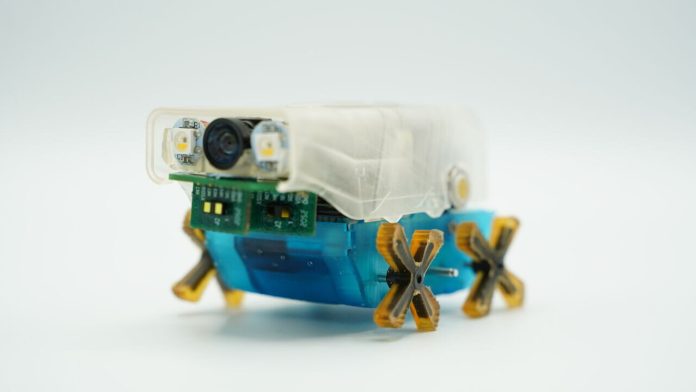
A team of engineers led by the University of Sheffield has developed tiny robots that could help stop water leaks in old underground pipes—without the need for digging.
These micro-robots, called Pipebots, are designed to travel through water pipes, find cracks, and even repair them, all on their own.
This new technology could help reduce water waste and save the U.K. billions of pounds in repair costs.
The U.K. has an aging water system that stretches about 350,000 kilometers, much of it dating back to the Victorian era.
Every day, around 3 billion liters of clean water are lost due to leaky pipes—enough to fill over a thousand Olympic-sized swimming pools.
Currently, finding a leak often means digging up streets to inspect underground pipes, which is time-consuming, expensive, and disruptive to local residents and businesses.
To solve this, researchers from the University of Sheffield, along with teams from the universities of Birmingham, Bristol, and Leeds, have built a new type of robot.
The smallest version is just 40 millimeters wide—about the size of a toy car. These Pipebots are equipped with small cameras and advanced sound sensors that allow them to find faults in pipes and send data back to engineers on the surface.
Instead of tearing up roads, engineers can place a group of these robots into water pipes through hydrants. Once inside, the robots move around on small legs that help them get through tricky or narrow parts of the pipe. They can work together as a team, avoid dead-ends like customer water lines, and quickly scan the area for cracks or blockages.
Professor Kirill Horoshenkov from the University of Sheffield says that Pipebots could make a big difference. Water leaks are not just a problem in the U.K.—they’re a global issue, especially in areas with old infrastructure. The Pipebots have the potential to detect even the tiniest leaks, helping water companies fix problems before they get worse.
The team is also working on several real-world projects. One involves creating sewer robots that live in the system and constantly watch for clogs. Another focuses on inspecting wastewater pipes without turning off the flow. A third project is testing technology that could repair leaks from inside the pipe—again, without any digging.
The robots might eventually be used in more than just water pipes. They could also inspect sewers, gas lines, and other places that are too dangerous or difficult for people to reach. The researchers are partnering with industry and local governments to make sure the bots meet practical needs and can be widely used.
If successful, Pipebots could transform how we care for vital infrastructure—saving money, water, and time, all without a shovel in sight.



